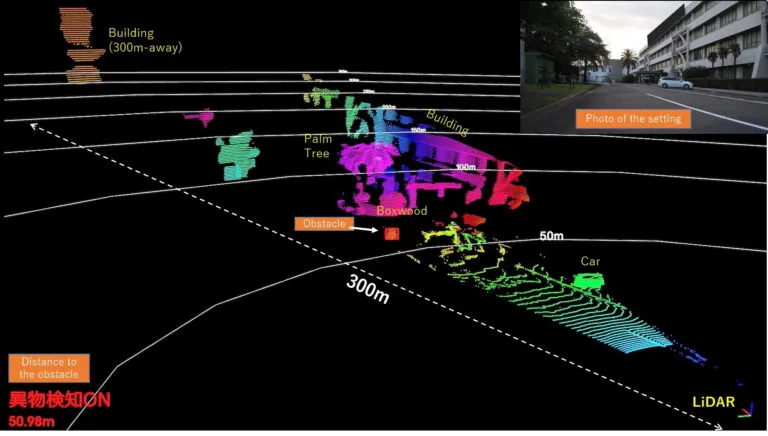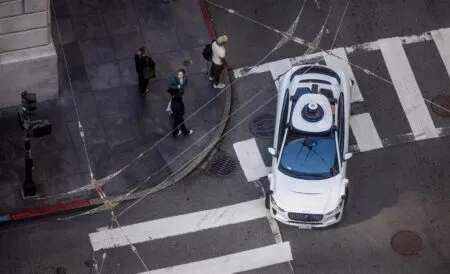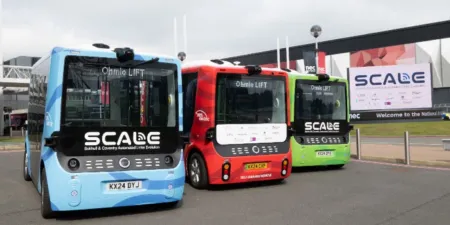Toshiba Corporation has announced an updated version of its solid-state lidar solution. With a maximum detection range of 200m and exceptionally high resolution, the new lidar unit will help to accelerate progression towards autonomous driving.
It will also create application opportunities for monitoring transportation infrastructure, such as early detection of road subsidence or landslides, snow cover, or fallen objects on roads.
Current methods for monitoring transportation infrastructure rely on cameras, but their performance is degraded by low light levels and adverse weather conditions. Toshiba’s extremely compact lidar unit realizes clear, long-distance, robust 3D scanning and object detection across a wide variety of lighting and weather conditions.
“We have developed technologies essential for a compact, high-resolution, long-range solid-state lidar solution that is robust and simple to implement,” says Akihide Sai, senior research scientist at Toshiba’s Corporate Research & Development Center. “Major demand for such a versatile solution is anticipated in both the autonomous driving and transportation infrastructure monitoring applications.”
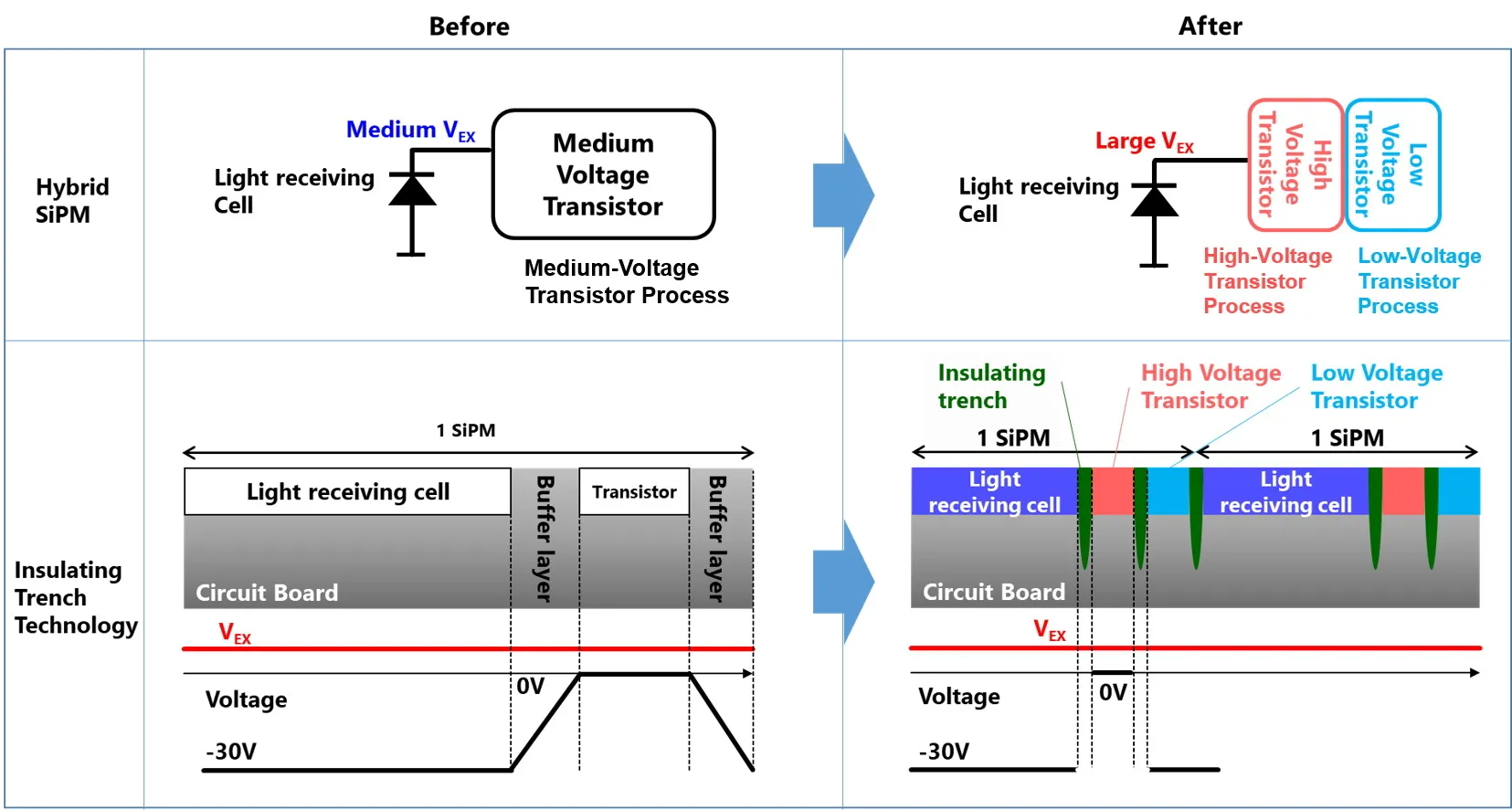
Pivotal to the compact lidar unit were the innovations that Toshiba made to its silicon photo-multiplier (SiPM) light-receiving chips to enhance the image resolution attained. Each SiPM consists of light-receiving cells controlled by transistors. The new chips have smaller transistor modules and eliminate the buffer layers protecting the transistors. Instead, newly developed insulating trenches are placed between the transistors and the light-receiving cells. The potential issue of reduced light sensitivity due to use of smaller transistors has been solved by increasing the voltage input to the light-receiving cell (Figure 1, above).
These innovations have reduced the size of the SiPM by 75% while elevating its light sensitivity by 50% compared with the July 2020 predecessor. More SiPMs can now be arrayed in the same package – thereby boosting the resolution to 1200 x 80 pixels (which is a 4x improvement).
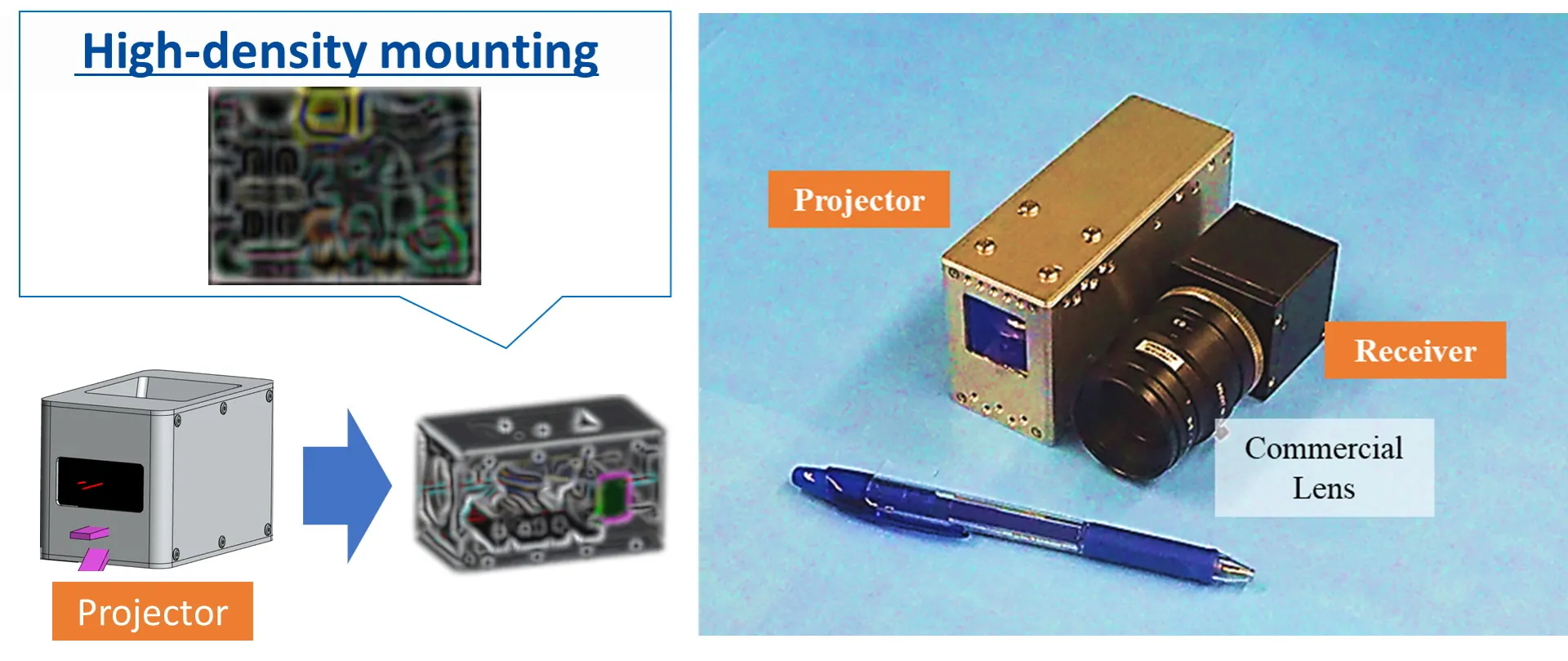
Toshiba has also ensured that the new lidar unit exhibits the durability that is essential for outdoor use in all weather conditions. A temperature compensation mechanism automatically adjusts the voltage input applied to the light-receiving cells, in order to mitigate the effect of external temperature changes. This means that heightened SiPM performance is maintained despite any ambient temperature fluctuations. Toshiba has also reduced the overall size of the lidar projector and receiver to a 350cc volume (Figure 2, above).
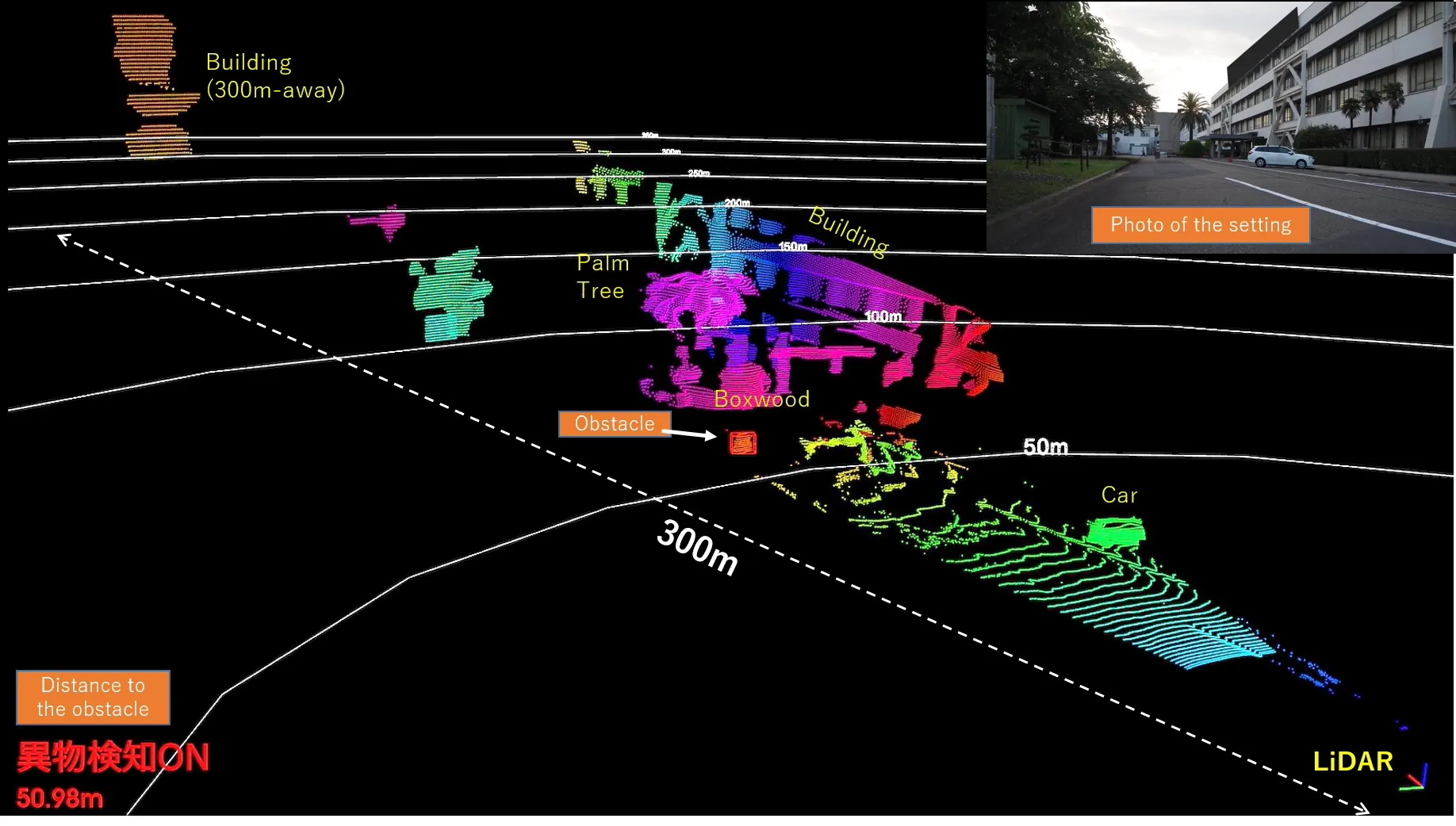
Toshiba will continue to contribute to safer transportation by promoting its advanced lidar technologies for autonomous driving and transportation infrastructure monitoring. Continued R&D activities will lead to further improvements in the detection range, image resolution and miniaturization of its lidar solutions. This will lead to new possibilities in robots, drones and small security devices.


